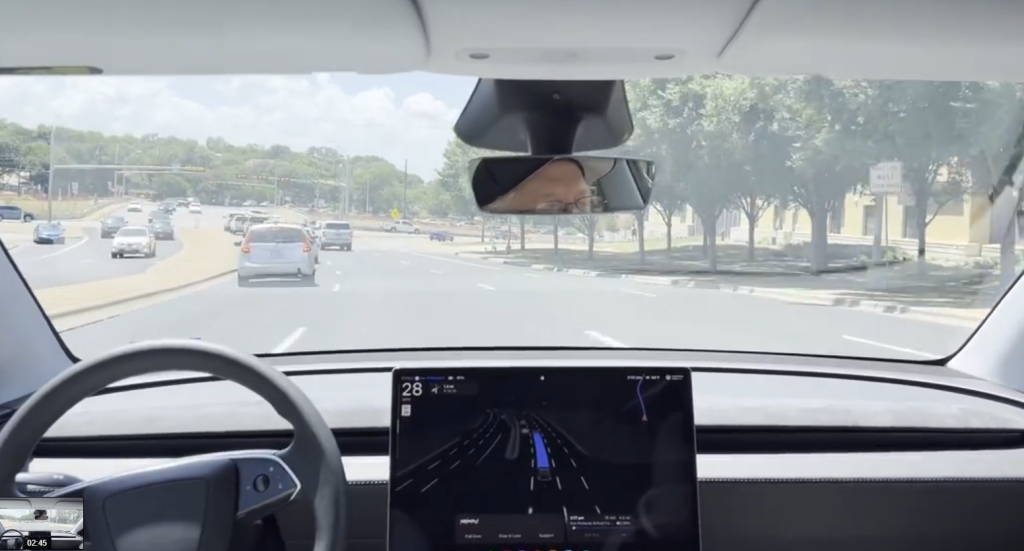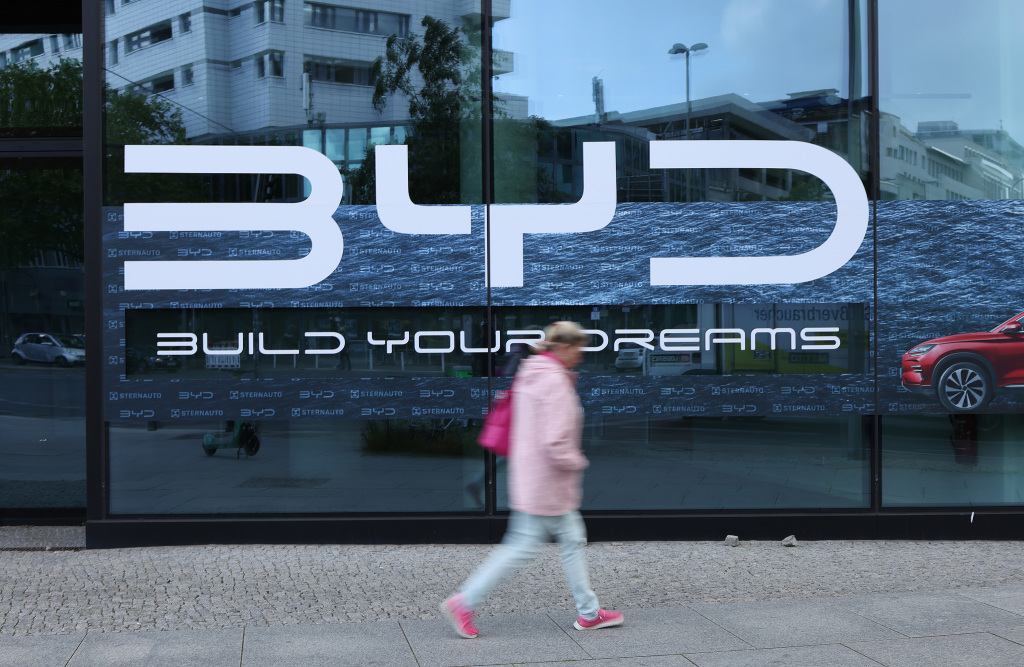
FSD (intelligent assisted driving system), which Tesla regards as the growth engine of its automotive business, has just taken the first step in the commercialization of Robotaxi (driverless taxi).
On June 22, local time, Tesla launched its first Robotaxi pilot service in Austin, Texas, marking a key step in the commercialization of its intelligent assisted driving system FSD. Although this move is seen as the core engine of Tesla's future growth, it has also raised questions. On the day Robotaxi started operating, Tesla's stock price rose 8%, but the decline in the following days completely wiped out the gains.
However, a week later, on June 28, a Model Y departed from Tesla's Texas Gigafactory, drove for 30 minutes, and finally arrived safely at the customer's doorstep and delivered itself to the new owner. There was no driver or remote control throughout the journey, and the maximum speed reached 115 kilometers per hour. Tesla said that this was the first time in history that a Tesla delivered itself to the owner. Once again, the outside world saw Tesla's capabilities in the field of autonomous driving, and even Lei Jun, who has repeatedly called for benchmarking Tesla, praised it.
Against the backdrop of intensified competition and slowing sales in the electric vehicle market, whether FSD will become Tesla’s “last trump card” has attracted widespread attention in the market.
Has Tesla's car business hit its ceiling?
In recent years, Tesla's core automotive business has been weak, sales have stagnated, new models have been slow to appear, and its financial performance has also been dragged down.
According to the latest data released by the European Automobile Manufacturers Association (ACEA) on May 27, Tesla's sales performance in the European market has fluctuated significantly. In April, the brand registered 5,475 new cars in Europe, a decrease of 52.6% compared with the same period last year. From the cumulative data of the first four months of this year, Tesla's new car registrations have dropped to 41,700, a year-on-year decrease of 46.1%. During the same period, the overall electric vehicle market in Europe showed a completely different development trend, with sales in April increasing by 26.4% year-on-year, and its share in the automobile market increased to 15.3%.
In contrast, in the Chinese market, Tesla achieved retail sales of 134,000 vehicles in the first quarter of this year, a slight increase of 1.7% year-on-year. However, the overall performance of the domestic new energy vehicle market was strong, with sales reaching 3.075 million vehicles in the same period, a year-on-year increase of 47.1%. As a pioneer in the field of new energy vehicles, Tesla's growth rate has lagged behind significantly.
The first quarter report shows that Tesla's operating income in the first quarter of this year was US$19.34 billion, a year-on-year decrease of 9%, and its net profit was US$409 million, a year-on-year decrease of 71%, both lower than analysts' expectations. In terms of the automotive business, Tesla delivered more than 336,000 vehicles in the first quarter, a decrease of 13%.
From the perspective of vehicle models, analysts generally point out that Tesla's two core models, Model 3 and Model Y, have entered the mature stage of their product life cycle, and their product competitiveness is being gradually surpassed by Chinese car companies.
Especially in the Chinese market, although Tesla's price reduction strategy may boost sales in the short term, from a long-term development perspective, this move will not only continue to compress profit margins and earnings, but the market boosting effect has shown a significant marginal decreasing trend.
Against this backdrop, Tesla urgently needs a new growth point to support its position as “the world’s most valuable automaker.”
FSD: From Assisted Driving to Robotaxi
Tesla FSD stands for Full-Self Driving, which is an intelligent driving system developed by Tesla. Based on the layout of large-scale mileage, self-developed computing platform, and huge computing power, FSD has always been regarded by the industry as a benchmark for self-developed intelligent driving by automakers.
Since the launch of the FSD system, Tesla has not only tried to reshape consumers' driving experience, but also taken a key step in its strategic transformation from a "hardware company" to an "AI+travel platform." However, the high price has limited its popularity among ordinary consumers, and the growth rate of new paying users has gradually slowed down.
The Robotaxi business is a new testing ground for the commercialization of FSD.
The Wall Street Journal wrote that Tesla's current market value is approximately $1.1 trillion, of which approximately 60% of the valuation is believed to depend on the realization of its future FSD and Robotaxi businesses.
Musk himself has repeatedly emphasized that FSD is the most valuable source of profit for Tesla's automotive business, and Robotaxi is an important way to realize this value. As early as the 2019 investor meeting, Musk said that Tesla could rent vehicles from users to form a Robotaxi fleet and achieve secondary profits.
On the technical level, FSD has built a highly integrated platform system in terms of reasoning architecture, neural network, and multi-camera fusion. It takes a pure visual AI route and does not rely on high-precision maps or lidar. Currently, FSD has accumulated more than 1 billion miles of real driving data worldwide.
Tesla has a cost advantage over its rival Alphabet Inc.-owned Waymo, which is equipped with expensive cameras, radars and lidars, and whose self-driving taxis use high-definition maps for navigation. But Tesla is equipped with only cameras and relies entirely on computer vision for navigation, which is more cost-effective and scalable.
Tesla FSD has evolved to version V13, using the HW4 computing platform. The latest version of the FSD system supports the direct activation of FSD when the vehicle is parked. The owner only needs to set the destination, and the vehicle will automatically switch to driving or reversing state and enter the automatic driving state.
In terms of technology, there has been new news about FSD. Recently, there are rumors that the self-developed chip HW5, the next-generation computing platform of Tesla's intelligent assisted driving system FSD, has entered the mass production stage and is jointly manufactured by TSMC and Samsung. Rumor has it that the chip has a computing performance of 2000-2500TOPS (one trillion operations per second), which is 5 times that of the current HW4 chip, and can support more complex unsupervised FSD algorithms.
The polarization of “trillion-dollar” business in the capital market
In the capital market, FSD is regarded as the core supporting logic for Tesla's current high valuation.
Morgan Stanley once said in a research report, "If FSD successfully achieves driverless driving and supports the Robotaxi network, Tesla should be regarded as an AI travel platform, and its valuation should be re-evaluated to a position like 'Amazon in retail and Nvidia in chips'."
Royal Bank of Canada estimates that Tesla's Robotaxi revenue could reach $115 billion by 2040, equivalent to about $50 billion in profits. Morgan Stanley analyst Adam Jonas estimates that the company's Robotaxi revenue could reach $700 billion by 2040, equivalent to about $120 billion in profits.
Cathie Wood, CEO of Ark Investment, boldly predicted that by 2029, Robotaxi service revenue could bring Tesla $951 billion in revenue. Ark Investment said that FSD and the Robotaxi model have the potential to transform Tesla into a "mobility as a service platform," and its profit model will be closer to Apple and Google than to GM and Toyota.
Tesla's stock price briefly rose 8% after the Robotaxi was unveiled, showing that market sentiment can quickly shift driven by innovation, but the subsequent decline also reflected the market's deep-seated doubts about Tesla.
Reuters commented that by getting these 10 or so vehicles on the road, Tesla has just completed the simplest part of operating Robotaxi.
Goldman Sachs analyst Mark Delaney pointed out that Robotaxi still faces major challenges in terms of technological expansion and regulation, and only gave a target price of $285; Tesla short GLJ Research bluntly stated that the model "lacks the logic of the sharing economy" and maintained a "sell" rating. Wells Fargo and Bank of America also believe that the market has fully taken into account its potential, and execution risk remains the main concern.
FSD and Robotaxi represent the core direction of Tesla's strategic transformation and are key drivers of its future growth and valuation. However, the scale of FSD and Robotaxi is worrying, especially the future of large-scale deployment of Robotaxi is still uncertain.


